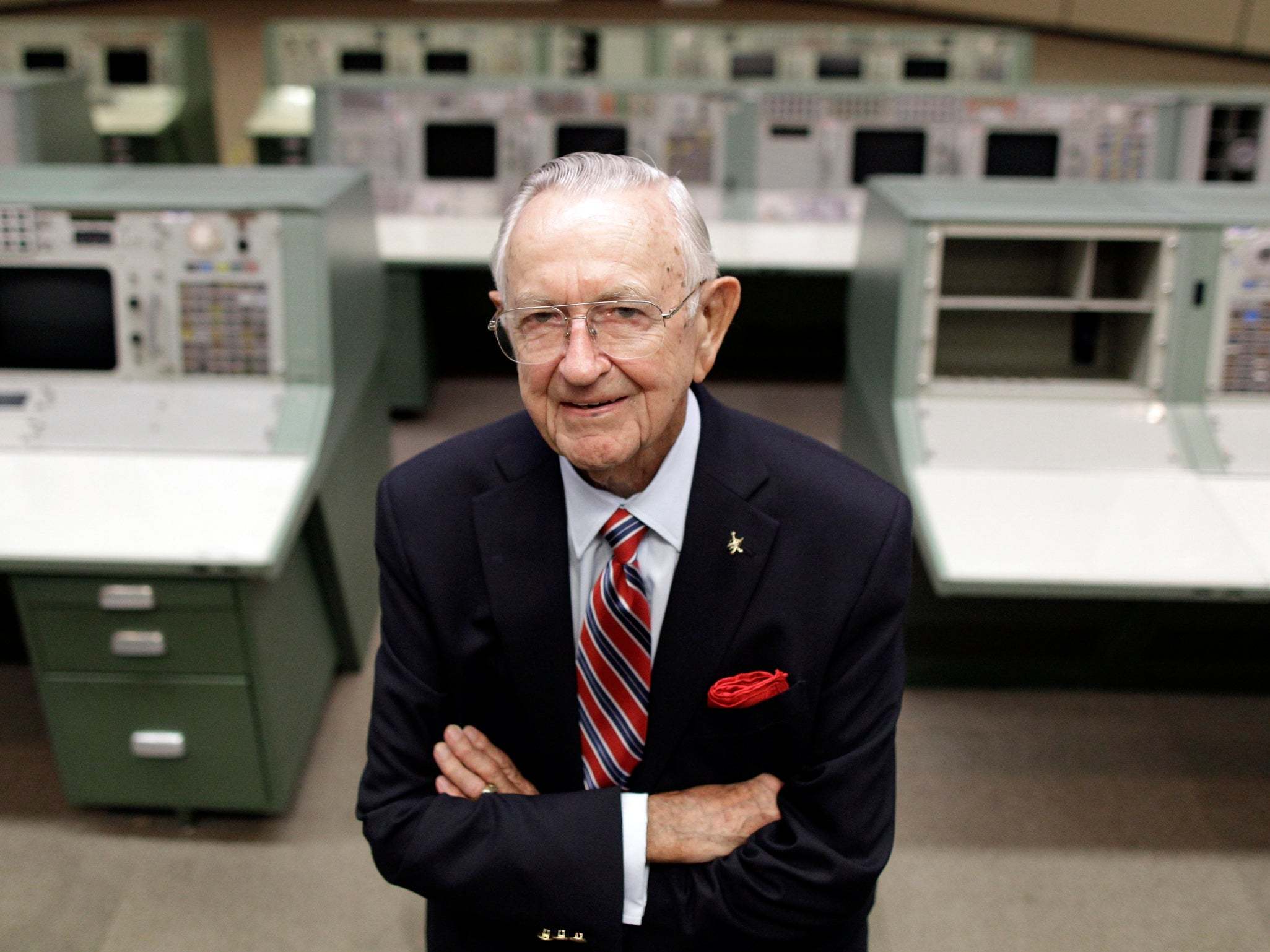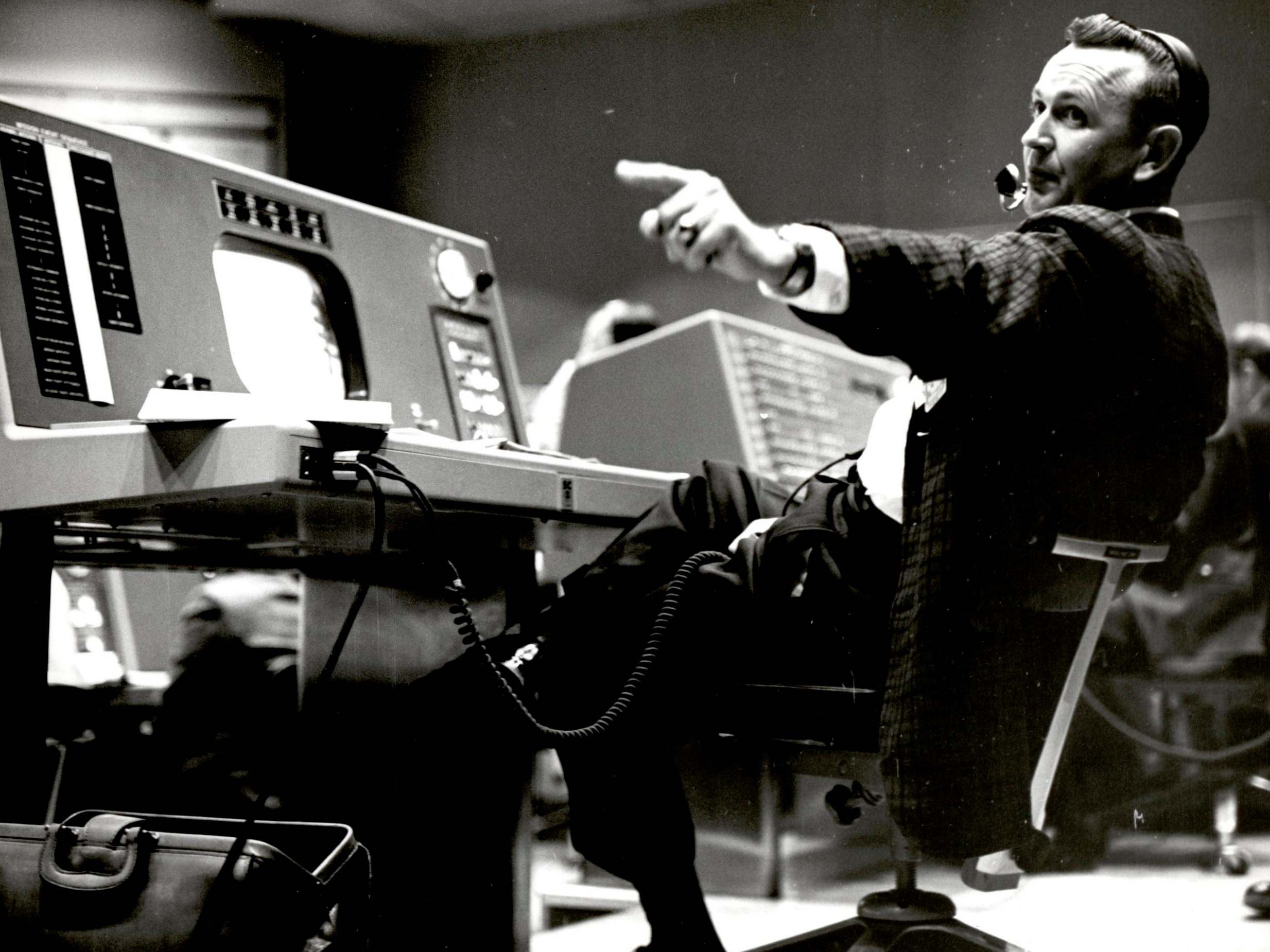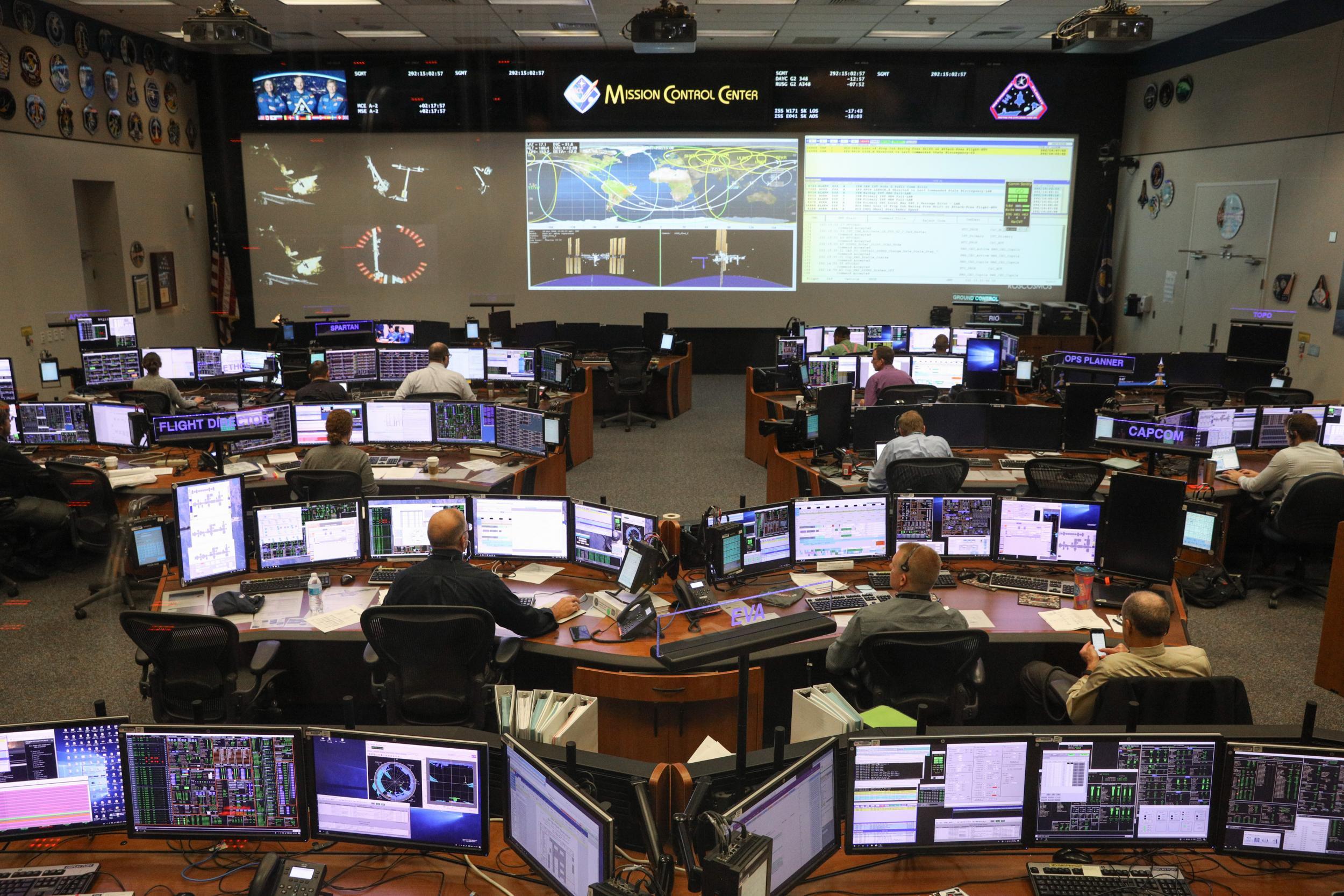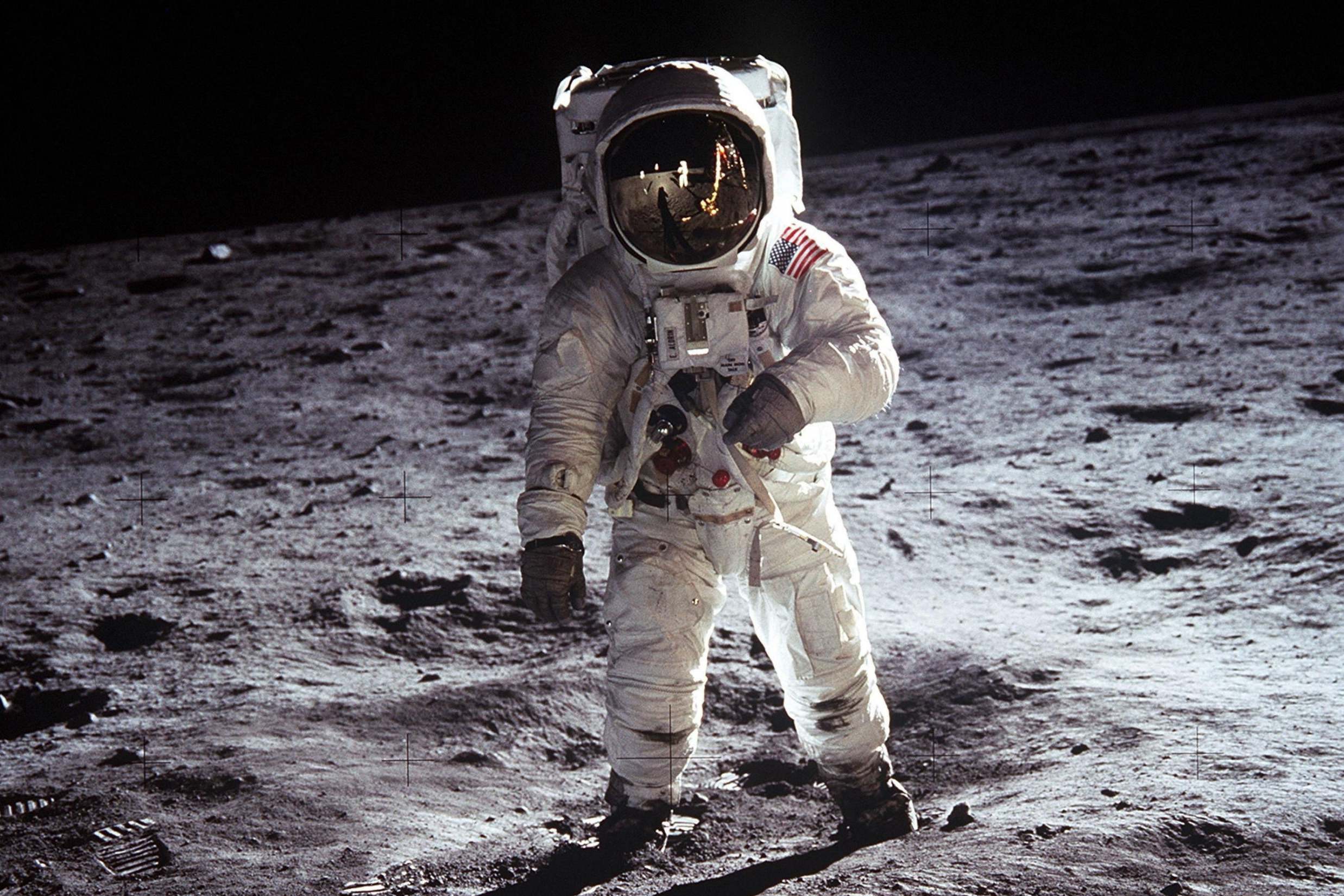Christopher Kraft death: NASA mission control chief behind decades of history dies, aged 95
Man behind most historic and pioneering moment in space remembered for career that spanned generations

Your support helps us to tell the story
From reproductive rights to climate change to Big Tech, The Independent is on the ground when the story is developing. Whether it's investigating the financials of Elon Musk's pro-Trump PAC or producing our latest documentary, 'The A Word', which shines a light on the American women fighting for reproductive rights, we know how important it is to parse out the facts from the messaging.
At such a critical moment in US history, we need reporters on the ground. Your donation allows us to keep sending journalists to speak to both sides of the story.
The Independent is trusted by Americans across the entire political spectrum. And unlike many other quality news outlets, we choose not to lock Americans out of our reporting and analysis with paywalls. We believe quality journalism should be available to everyone, paid for by those who can afford it.
Your support makes all the difference.Christopher C Kraft Jr, the legendary founder of Nasa’s mission control, who directed America’s first piloted orbital flights, oversaw the Apollo 11 lunar landing and was director of the Johnson Space Center in Houston, died on Monday in Houston, two days after the 50th anniversary of that historic moment on the moon. He was 95.
Nasa announced the death.
For 25 years, from the dawn of the Space Age in the 1950s to the threshold of almost routine launchings in the 1980s, Kraft played crucial roles in the space programme.
He devised the protocols for exploration beyond the Earth’s atmosphere, orchestrated early orbital missions and spacewalks, and developed projects that put astronauts on the moon and into the first reusable space shuttles.
Aside from the astronauts who made history – including Alan B Shepard Jr, with his suborbital flight; John Glenn, in orbiting the Earth; and Neil Armstrong and Buzz Aldrin, the first men to land on the lunar surface – Kraft was the most familiar face of the National Aeronautics and Space Administration’s early years, the steady ground commander who often explained missions to a rapt world at news conferences.
In an era of perilous experiments hastened by the Soviet success of Sputnik, the first artificial satellite, Kraft presided over triumphal breakthroughs in the Mercury, Gemini and Apollo projects.
He also stood by helplessly when a fire killed three astronauts on a launchpad in 1967, but he helped devise the ingenious plan that saved the Apollo 13 crew after an explosion crippled their spacecraft en route to the moon in 1970.
At a time when there were no rules or procedures for space travel, Kraft, a brilliant aeronautical engineer, virtually wrote the book for Nasa.
He originated the concept of mission control, with authority vested in a ground-based flight director, not in a pilot-astronaut soaring through space at 7 miles a second who might be overwhelmed by pressures, especially during launch or re-entry.
Kraft also developed the templates for a generation of space exploration, including global tracking and communications networks; instruments to monitor the condition of astronauts; and spacecraft propulsion and operating systems.
He was also the mastermind behind flight plans; emergency procedures; techniques for splashdowns and recoveries at sea; even programs to train and coordinate the work of thousands of ground personnel.

His plans for each mission were thicker than the New York telephone books of those days.
Appearing before hundreds of reporters as Nasa’s spokesman in the early missions, first at Cape Canaveral, Florida, and later in Houston, he seemed a mild-mannered, soft-spoken technocrat.
But in the windowless mission control room, he became a blunt taskmaster, demanding obedience and precision from subordinates and astronauts.

Wearing headphones, chewing a cigar, seated in a swivel chair at the flight director’s console surrounded by engineers at their computers and 17 projection screens, he coolly absorbed avalanches of incoming data and made tough “go, no-go” decisions during launch countdowns, at separation points of multistage rocket ascents and at other critical times in a flight.
During his Nasa years, he never saw a rocket lift off, except on television monitors. Nor did he usually address his astronauts. A “capsule communicator” relayed his instructions, although he went on the air to give emphasis to his orders, to intervene in emergencies and to banter away tensions.
His voice conveyed unshakable confidence, though a flight surgeon during one liftoff measured his pulse at 135 beats a minute.
Some astronauts chafed under his commands. In one contretemps, asKraft regarded Scott Carpenter, one of America’s original astronauts, as insubordinate on a Mercury flight and grounded him permanently.
While his relationship with the astronauts was not always smooth, he was adamant about who was in charge. “The guy on the ground ultimately controls the mission,” Kraft said in 1965. “There’s no question about that in my mind or in the astronauts’ minds. They are going to do what he says.”
As Nasa turned to the later Gemini flights and the lunar-landing missions of the late 1960s, Kraft stepped back from direct control of flights and took broader roles in planning and managing Project Apollo, including the selection and mentoring of his successors in flight control.
By then, he was a household name to Americans, and his habit of lighting a cigar amid jubilant cheers and applause at moments of triumph in mission control had become a familiar portrait on television and in newspapers and magazines, a symbol of swelling national pride in outdistancing the Soviet Union.

At the climax of Apollo 11’s descent to the lunar surface, Kraft was in mission control and conferred urgently with Kranz when, minutes before the scheduled landing, computer alarms rang out, threatening disaster. The world knew nothing about it until Kraft disclosed the event days later, and credited the Kranz team with resolving it.
In 1965, Kraft was on the cover of Time magazine, profiled as the “Conductor in a Command Post”. He drew the comparison himself: “The conductor can’t play all the instruments – he may not even be able to play any one of them.
"But he knows when the first violin should be playing, and he knows when the trumpets should be loud or soft, and when the drummer should be drumming. He mixes all this up and out comes the music. That’s what we do here.”
With his protégés Glynn Lunney and Eugene Kranz in charge of flight controls, Kraft became director of flight operations, with overall responsibility for the dress rehearsals of Apollo 7, 8, 9 and 10; for the historic Apollo 11 moon landing on July 20, 1969; and for Apollo 12, a moon landing four months later.
The 50th anniversary of the first lunar landing has been widely celebrated with a host of commemorative events, including television documentaries.
“The computer was right on the ragged edge,” he said. Asked if the team had been worried, he snapped, “You’re damn right we were.”
Four more Apollo missions put astronauts on the moon, but Kraft was less directly involved. He became deputy director of the Manned Spacecraft Center in Houston in 1969.
However, when Apollo 13 was crippled by an explosion en route to the moon, Kranz called him in to mission control. Kraft chaired a meeting of senior managers, who devised a rescue plan that used the lunar excursion module as a “lifeboat” to save the crew, as dramatised in the 1995 film “Apollo 13".
In 1972, Kraft was named director of the spacecraft centre – renamed the Johnson Space Center in 1973 – and held the post for a decade until his retirement in 1982. Besides overseeing the remaining Apollo missions, he played roles in the success of the first crewed space station, Skylab; the first international space docking; the Apollo-Soyuz test project; and the first space shuttle flights.
The shuttle Columbia flew a nearly flawless first mission in April 1981, circling the world 36 times and landing in California. But its second flight seven months later had to be curtailed to two days from five after fuel-cell problems arose.
It was “the prudent thing to do”, said Kraft, who did not light a cigar.
Christopher Columbus Kraft Jr was born in Phoebus, in eastern Virginia, on 28 February 1924, to Christopher and Vanda (Suddreth) Kraft. His father, a hospital finance officer, had been born just before the 400th anniversary of Columbus’ arrival in the New World: thus the name. Later, many would consider it appropriate for the son.
Christopher Jr was a fine baseball player and dreamed of becoming a pro. After high school graduation in 1941, he enrolled at Virginia Polytechnic Institute. With the outbreak of World War II, he tried to enlist in the Navy but was rejected because of a childhood hand injury. He graduated in 1944 with a bachelor’s degree in aeronautical engineering.
The next year he joined what is now known as the Langley Research Center, of the National Advisory Committee for Aeronautics. It was on the cutting edge of aeronautical research, using wind tunnels to test aircraft designs and working on the X-1 experimental rocket.
In 1950, he married Elizabeth Anne Turnbull. They lived in Houston and had two children, Gordon and Kristi Anne. Complete information on his survivors was not immediately available.
In retirement, Kraft became a consultant to Rockwell International and IBM. His memoir, “Flight: My Life in Mission Control”, was published in 2001 and became a bestseller.
In 2011, Nasa named the mission control centre in Houston after him.
Michael Coats, then the director of the Johnson Space Center, called Kraft’s life a testament to his dream of space exploration: “He is a space pioneer without whom we’d never have heard those historic words on the surface of the moon: ‘Houston. Tranquility Base here. The Eagle has landed.’ Those words effectively put Houston, and this building behind us, on the intergalactic map forever.”
The New York Times
Join our commenting forum
Join thought-provoking conversations, follow other Independent readers and see their replies
Comments